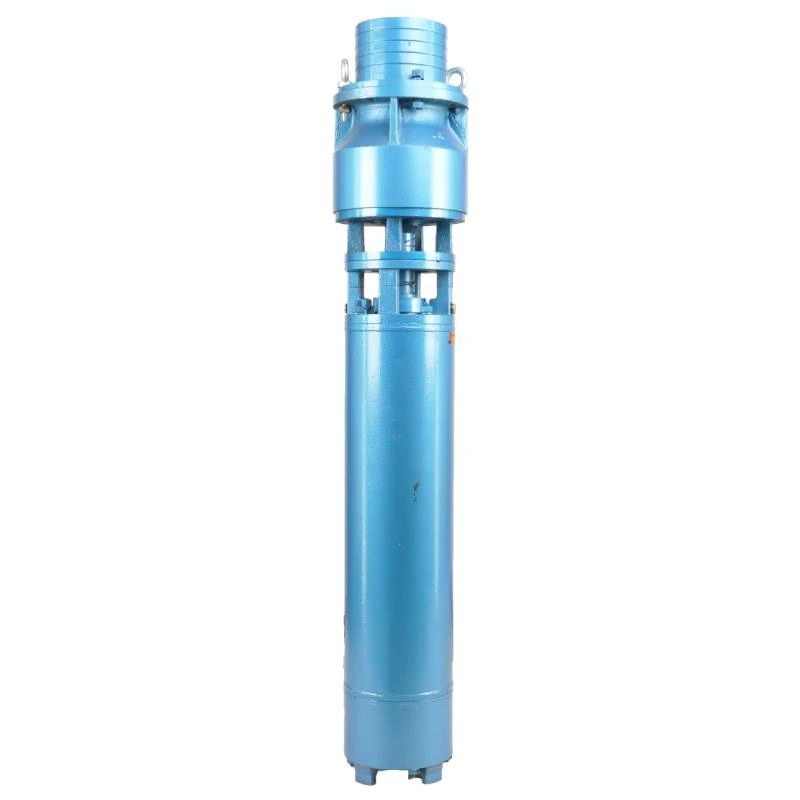Dec . 07, 2024 07:51 Back to list
sewage submersible pump
Understanding Sewage Submersible Pumps A Comprehensive Overview
Sewage submersible pumps, a critical component in wastewater management, are designed to efficiently handle the transport of sewage and effluent in both residential and commercial settings. Unlike traditional pumps that are installed above ground, submersible pumps operate underwater, making them particularly suitable for applications where the fluid needs to be lifted from a lower elevation to a higher one.
Design and Functionality
The design of a sewage submersible pump typically consists of a motor that is encased in a waterproof housing. This allows the pump to be immersed within the sewage while operating safely and efficiently. The impeller, which is the part of the pump responsible for moving the sewage, is usually designed to handle solid waste and debris, such as paper, clothing, and other non-dissolvable materials that may be present in sewage.
The operational principle of these pumps is relatively straightforward. When activated, the impeller rotates to create a centrifugal force, propelling the sewage through the discharge pipe. The pumps can be equipped with various features, including float switches that automatically turn the pump on or off based on sewage levels, ensuring optimal operation without manual intervention.
Applications
Sewage submersible pumps are employed in a variety of applications. In residential settings, they are commonly used for basement drainage, where groundwater or sewage can accumulate and cause flooding. In commercial environments, these pumps are vital for managing wastewater in facilities such as restaurants and hotels, where large volumes of sewage are generated daily.
Additionally, sewage submersible pumps are used in municipal applications, such as wastewater treatment plants, where they help transport sludge and effluent through different stages of treatment. They are also essential in construction sites for dewatering purposes, ensuring that excavations remain dry and safe for workers.
sewage submersible pump

Advantages
One of the primary advantages of sewage submersible pumps is their efficiency. By operating underwater, these pumps minimize the need for lengthy suction pipes, which can reduce the risk of clogging and energy losses. Furthermore, their ability to handle solids means that they require less maintenance compared to other types of pumps.
Another benefit is their compact size. Submersible pumps can be installed in tight spaces, making them ideal for locations where above-ground installations would be impractical. Their design also helps reduce noise levels, as the pump operates submerged, lessening the sound that would typically be associated with pumping systems.
Maintenance Considerations
While sewage submersible pumps are robust, regular maintenance is crucial for ensuring their longevity and efficiency. Users should periodically inspect the pump for wear and tear, ensuring that the impeller and motor are functioning correctly. Cleaning the pump to remove any accumulated debris is also important to prevent blockage and ensure optimal performance.
In addition, it's essential to check the electrical components of the pump to avoid potential malfunctions. Many manufacturers recommend annual servicing by professionals to ensure that the pump operates smoothly and meets safety standards.
Conclusion
Sewage submersible pumps play an indispensable role in modern wastewater management, providing efficient and reliable solutions for handling sewage in various environments. Their unique design, coupled with their ability to handle solids and operate underwater, makes them a preferred choice for many applications. As infrastructure continues to evolve, the importance of effective sewage management will remain paramount, and submersible pumps will undoubtedly be at the forefront of this critical aspect of environmental health.
-
Submersible Water Pump: The Efficient 'Power Pioneer' of the Underwater World
NewsJul.01,2025
-
Submersible Pond Pump: The Hidden Guardian of Water Landscape Ecology
NewsJul.01,2025
-
Stainless Well Pump: A Reliable and Durable Pumping Main Force
NewsJul.01,2025
-
Stainless Steel Submersible Pump: An Efficient and Versatile Tool for Underwater Operations
NewsJul.01,2025
-
Deep Well Submersible Pump: An Efficient 'Sucker' of Groundwater Sources
NewsJul.01,2025
-
Deep Water Well Pump: An Efficient 'Sucker' of Groundwater Sources
NewsJul.01,2025
-
 Submersible Water Pump: The Efficient 'Power Pioneer' of the Underwater WorldIn the field of hydraulic equipment, the Submersible Water Pump has become the core equipment for underwater operations and water resource transportation due to its unique design and excellent performance.Detail
Submersible Water Pump: The Efficient 'Power Pioneer' of the Underwater WorldIn the field of hydraulic equipment, the Submersible Water Pump has become the core equipment for underwater operations and water resource transportation due to its unique design and excellent performance.Detail -
 Submersible Pond Pump: The Hidden Guardian of Water Landscape EcologyIn courtyard landscapes, ecological ponds, and even small-scale water conservancy projects, there is a silent yet indispensable equipment - the Submersible Pond Pump.Detail
Submersible Pond Pump: The Hidden Guardian of Water Landscape EcologyIn courtyard landscapes, ecological ponds, and even small-scale water conservancy projects, there is a silent yet indispensable equipment - the Submersible Pond Pump.Detail -
 Stainless Well Pump: A Reliable and Durable Pumping Main ForceIn the field of water resource transportation, Stainless Well Pump has become the core equipment for various pumping scenarios with its excellent performance and reliable quality.Detail
Stainless Well Pump: A Reliable and Durable Pumping Main ForceIn the field of water resource transportation, Stainless Well Pump has become the core equipment for various pumping scenarios with its excellent performance and reliable quality.Detail
